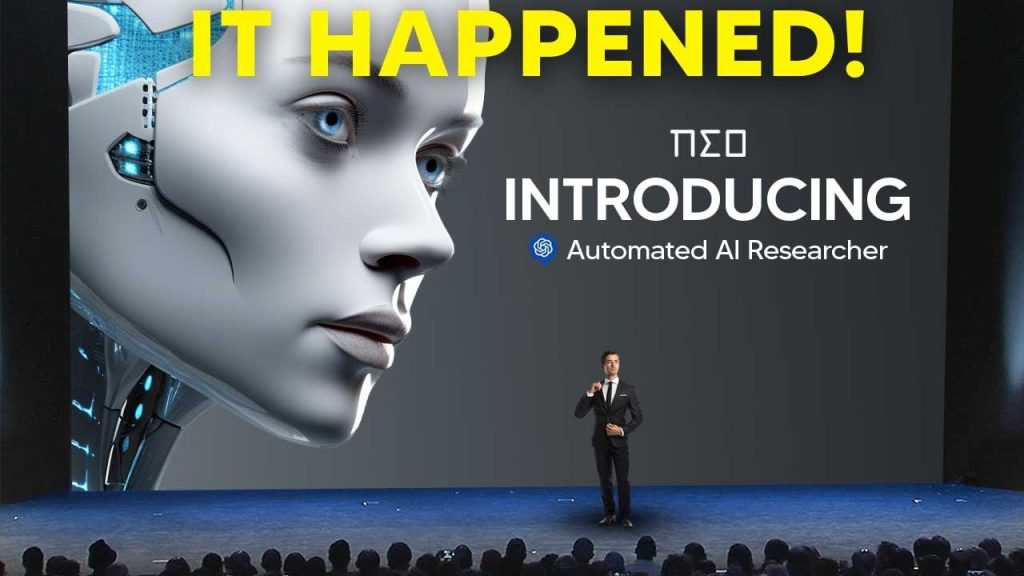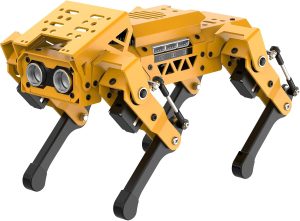Revolutionizing AI Engineering The Arrival of Neo

artificial intelligence is on a rapid climb with no signs of hitting the brakes, and today brings a groundbreaking development.
Enter Neo, the world’s first AI engineer tailored for machine learning tasks, and it comes with a twist – outperforming OpenAI at certain challenges.
The team behind Neo has spent two years perfecting this revolutionary product that marks a step towards artificial super intelligence.
Neo’s Approach to Machine Learning
Imagine teaching a computer to recognize cats. Sounds simple, right? But it requires thousands of images, data cleanup, and choosing the right algorithms. Neo changes the game by automating these complex tasks that usually take weeks or months.
Neo kicks off by analyzing the competition link, understanding its requirements, and planning crucial steps such as data prep, model tuning, evaluation, and deployment. It uses multi-step reasoning to explore solutions, chooses the best path, and starts implementation. Designing a strong data pipeline is vital, and Neo performs it seamlessly.
Neo conducts several fine-tuning experiments with different hyperparameters to save time and resources. It pursues the most promising experiments in a GPU sandbox. Post fine-tuning, it produces an evaluation report offering insights into the effective completion of the experiments. Post optimization, Neo is ready to deploy, analyzing throughput and latency across various frameworks like VM and tensor RT with diverse GPU types.
Building a Fraud Detection System
Neo was tasked with building a credit card fraud detection system, crucial in financial security. Typically, such systems require a team’s deep expertise and months to develop.
Neo examines the Kaggle dataset, understands its structure, and approaches the problem strategically. It evaluates configurations and opts for the most promising ones. It delivers detailed metrics essential for minimizing fraud while avoiding false alarms.
The system evaluates its choices and devises a plan to run training and experimentation, which leads to insightful evaluations including Precision recall and F1 score.
Facing Natural Language Data
Now comes a different challenge using the Goodreads dataset, a treasure trove of book reviews written in natural language.
Neo tackles the challenge of converting subjective opinions into data a computer can analyze. It creates a pipeline to change reviews into numbers, runs experiments with varying parameters, and learns to enhance its approach.
As training loss decreases, Neo’s understanding and prediction of reader preferences improve. The system dynamically learns, a task challenging even for humans.
Automating AI Research: The Future
What’s groundbreaking is how Neo automates tasks in machine learning, traditionally slow and resource-intensive endeavors.
Neo converts demanding and detail-heavy processes into automated tasks while maintaining sophistication and creativity. Companies unable to afford extensive ML teams now have a chance to compete with tech giants.
The technology democratizes AI development, allowing researchers to focus on innovation, not get mired in technical details.
Preparing for Early Beta
Neo’s team is gearing up for early beta access, and this development promises significant strides in AI this year.
We’re at the onset of a new era where AI doesn’t just aid engineers but becomes them. Keeping an eye on Neo is a must for tech enthusiasts.
This technology offers groundbreaking changes and accelerates trends in AI research.
The Vision for Super Intelligence
A decade of algorithmic advances might soon compress into a year with AI research automation.
Automating the AI research pipeline could mean performing a decade’s worth of work in days. It might turbocharge the speed of AI development.
The forecasted 100 million automated AI researchers working at 100 times human speed suggests the extraordinary potential of such advancements.
Significance for the AI Industry
Traditional machine learning felt like building a skyscraper with limited resources, slow and prone to errors.
Neo changes this, offering not just time-saving but a revolution in AI development, granting small companies competitive power against large tech firms.
It’s not just about saving costs but democratizing AI, enabling smaller players to innovate and explore new possibilities.
The Countdown Begins
The AI industry awaits Neo’s developments, which could redefine automated AI research’s future.
If Neo achieves 80% or 90% of its potential, it might be a gigantic leap for automated AI research, a field with profound implications.
Neo’s advances could mark substantial progress for the AI industry, emphasizing its transformative power.
Future Implications
Keeping an eye on companies like those behind Neo is crucial as AI technologies evolve. Neo brings attention to the broader implications of automated AI research.
As this technology progresses, it might dramatically reshape the landscape of AI research and development, compressing development timescales significantly.
Neo represents a new frontier for AI, automating processes with precision and creativity.
The potentials for smaller companies and researchers in AI development soar, thanks to Neo’s groundbreaking capabilities.







